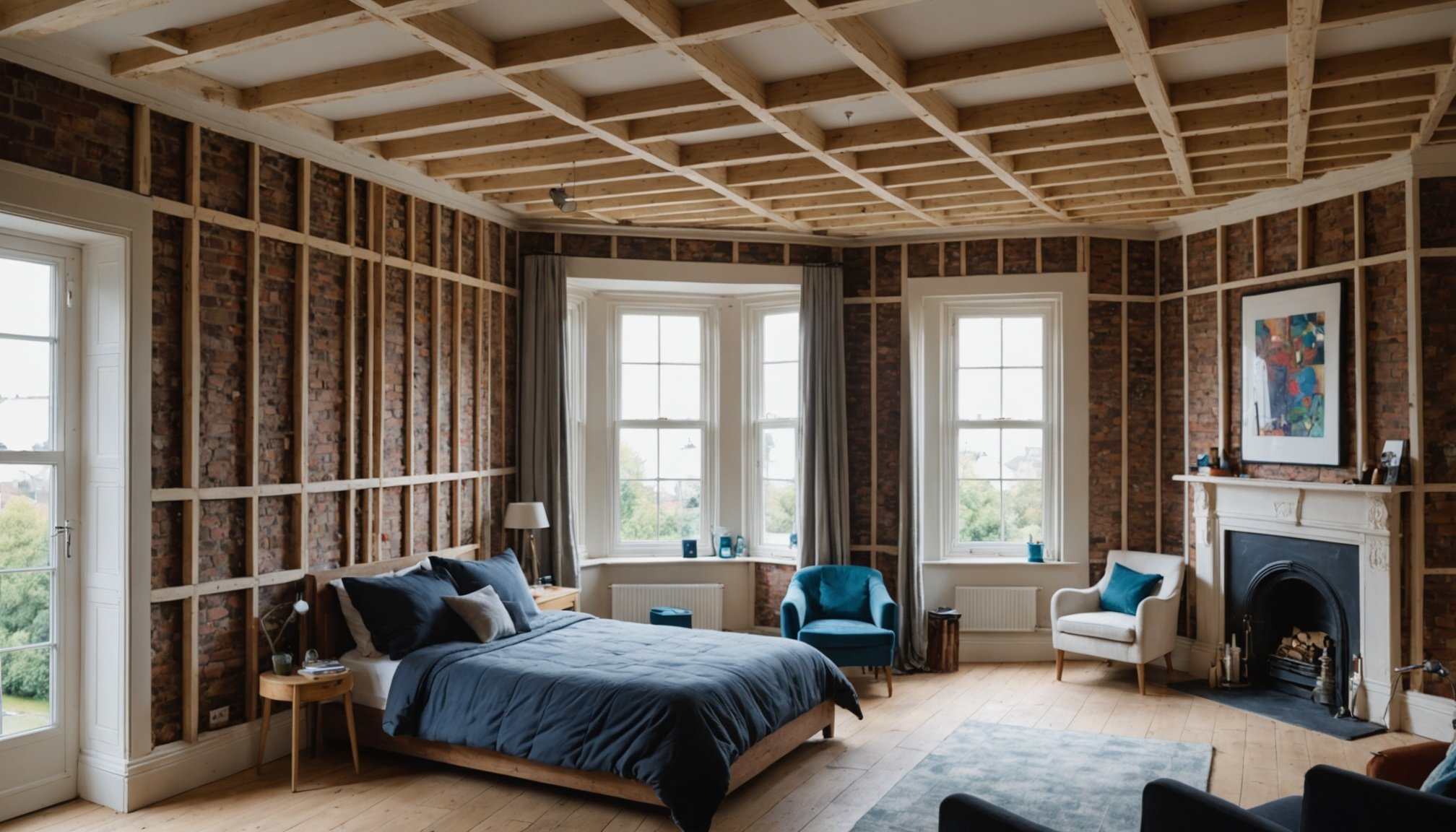Effective Soundproofing Materials for DIY Projects
Tackling unwanted noise can be a breeze with the right soundproofing materials. For those eager to embark on DIY soundproofing solutions, understanding which materials are both effective and practical is key.
Acoustic panels top the list for many urban dwellers aiming for urban noise reduction. These panels are lauded for their ability to absorb sound, making them particularly beneficial in city apartments. Their installation is straightforward, and they come in various designs that can complement your interior decor. However, while effective in reducing echo, they might not eliminate all external noises.
A découvrir également : Top-performing Cordless Vacuum Cleaners for Pet Owners in the UK: Find Your Perfect Match!
Another popular choice is insulation. Often found within walls or ceilings, insulation provides both thermal and acoustic benefits. It excels in dampening sounds between rooms or floor levels. While slightly more complex to install than acoustic panels, insulation offers a more comprehensive solution, especially for larger spaces or entire homes.
When considering costs, acoustic panels might require a higher initial investment due to their variety and aesthetic appeal but tend to need minimal maintenance. On the other hand, insulation could be more economical long-term, offering dual benefits but at the cost of more intensive installation. Weighing these cost-benefit factors is crucial in choosing the right solution for urban noise challenges.
A découvrir également : Maximizing Savings: The Most Profitable Solar Panel Installations for UK Homeowners
Techniques for Implementing Soundproofing
Implementing effective soundproofing techniques requires both understanding and precision. To begin, let’s explore some common methods that can be employed to reduce noise.
Step-by-Step Guides for Common Soundproofing Techniques
One popular approach is sealing gaps, which addresses potential sound entry points. This can be done using weather stripping around windows and doors to effectively block out noise. Next, consider adding mass to walls or ceilings. This could involve installing heavier materials, such as drywall, which serves as a barrier to sound waves.
Furthermore, employing DIY installation methods can often effectively manage noise without professional help. This might include hanging thick curtains or installing sound-absorbing panels, both of which are accessible solutions for many homeowners.
Tips for Optimizing Soundproofing
For those in lively environments, optimizing soundproofing takes a strategic twist. It’s beneficial to incorporate noise reduction strategies, such as rearranging furniture to block noise pathways or using rugs to dampen sound reverberation.
Importance of Proper Installation
Understanding the importance of proper installation cannot be overstated. Improperly installed soundproofing measures will fail to achieve the desired level of noise reduction. Attention to detail, such as ensuring a snug fit for seals or precise layering of materials, anchors the success of these efforts. This meticulous approach ensures long-lasting peace and quiet.
Case Studies from DIY Enthusiasts
Engaging in a DIY soundproofing project can be both rewarding and challenging. Here’s a look at urban homeowners who have taken soundproofing into their own hands and shared their experiences.
Successful Soundproofing Stories
Many urban dwellers face incessant noise issues and turn to DIY solutions to regain peace in their homes. For instance, one homeowner living near a bustling city intersection applied a combination of acoustic panels and heavy curtains. Their approach notably reduced external noise, demonstrating that simple, accessible materials can be highly effective. Another example includes a city resident who transformed their home office using thick carpeting and door sweeps. This effort significantly improved sound insulation, illustrating that varying approaches to common noise problems can lead to successful outcomes.
Lessons Learned from DIY Projects
The journey through DIY soundproofing case studies reveals invaluable insights. A recurrent theme in homeowner testimonials is the importance of research and careful planning. Knowing the precise areas needing attention often determines success. Additionally, budget-friendly alternatives often deliver more value than expected, particularly when executed with patience and creativity.
Varying Approaches to Common Noise Problems
Homeowners tackle noise challenges with diverse strategies, from wall-mounted foam tiles to double-glazed windows. Each solution comes with its own set of benefits and drawbacks, emphasizing that soundproofing is not a one-size-fits-all endeavor. The adaptability and resourcefulness of these enthusiasts provide hope and guidance for others facing similar noise issues.
Cost Analysis of Soundproofing Solutions
Understanding the soundproofing costs is essential for anyone looking to tackle a noise problem. Whether you’re planning a DIY project or hiring professionals, knowing where your money goes will help you make more informed decisions.
Breakdown of Costs
Different soundproofing solutions come with varying costs. Basic options might include simple thermal curtains or under-door sweeps which are relatively affordable. More advanced solutions, like mass-loaded vinyl or double-glazed windows, significantly increase investments but offer excellent results. Materials are merely part of the cost; professional installation often forms a substantial portion. The more intricate the installation, such as building a room within a room, the steeper the professional fees.
DIY vs. Professional Installation
Choosing between a DIY approach or hiring experts hinges on budget and expertise. Budgeting for DIY usually means allocating funds primarily for materials, and it suits those with handyman skills. For complex issues, professional services ensure effective installation but at a higher price.
Tips for Budgeting
Effective budgeting for soundproofing projects involves defining your goals clearly. Begin by prioritizing areas requiring soundproofing and selecting solutions that balance cost with performance. Also, explore financing options for larger projects, ensuring they don’t strain your finances. Proper budgeting plans prevent unforeseen expenses, ensuring a smooth journey to a quieter space.
Localized Advice for UK Urban Homes
In the vibrant urban areas of the UK, soundproofing becomes a crucial concern for many residents. With the hustle and bustle of city life, finding peace at home can be challenging. Local urban living tips can be beneficial for managing noise levels effectively.
Living in a lively UK city presents unique challenges. The constant noise from traffic, public transport, and nightlife can significantly disturb your peace. To combat this, consider regional noise reduction advice tailored to your area.
Recommendations for sourcing materials locally are valuable. Look for soundproofing materials available from local stores or suppliers. These might include acoustic panels, weather-stripping, or heavy curtains. Supporting local businesses not only helps reduce carbon footprint but also ensures materials adhere to UK-specific standards.
It’s vital to consider local regulations and building codes when undertaking soundproofing projects. Different areas have specific rules—which can impact what modifications are permissible in your home. Some councils have guidelines to ensure that changes benefit both homeowners and the community. Consulting with local authorities or a professional can help navigate these requirements while achieving effective soundproofing solutions.
Implementing these regional noise reduction strategies can create a quieter, more comfortable living environment amidst urban living chaos.
Visual Aids and Resources for Soundproofing
Harnessing the power of soundproofing visuals is crucial in mastering soundproofing techniques. Visual aids like diagrams and step-by-step guides help demystify complex processes, providing a clear, actionable blueprint for users. They bridge the gap between theoretical knowledge and practical application, ensuring tasks are performed accurately and efficiently.
For those embarking on a DIY journey, instructional videos are invaluable. Platforms such as YouTube host a plethora of tutorials from seasoned experts demonstrating soundproofing methods. These videos offer not only real-time demonstrations but also insightful tips, ensuring viewers are well-equipped to tackle projects independently.
To deepen your understanding and supplement video learning, exploring resources for DIY is beneficial. Websites dedicated to home improvement provide forums where hobbyists and experts exchange advice, share experiences, and discuss the nuances of soundproofing. Additionally, many of these platforms host downloadable written guides and schematics that can be revisited as needed.
Further exploration into soundproofing can be facilitated by joining online communities focused on DIY projects. Engaging with fellow enthusiasts provides continual learning opportunities and builds a support network for troubleshooting and innovation.











